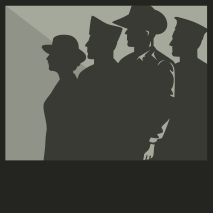BALFOUR-OGILVY, Jack Mansel
| Service Number: | SX1662 |
|---|---|
| Enlisted: | 2 January 1940, Adelaide, South Australia |
| Last Rank: | Captain |
| Last Unit: | 2nd/33rd Infantry Battalion |
| Born: | Renmark, South Australia, 10 July 1918 |
| Home Town: | Renmark, Renmark Paringa, South Australia |
| Schooling: | Not yet discovered |
| Occupation: | Legacy House - Adelaide |
| Died: | Adelaide, South Australia, 13 September 1980, aged 62 years, cause of death not yet discovered |
| Cemetery: | Not yet discovered |
| Memorials: | Renmark District Roll of Honour WW2, South Australian Garden of Remembrance |
World War 2 Service
| 2 Jan 1940: | Involvement Private, SX1662, 2nd/33rd Infantry Battalion, Enlistment/Embarkation WW2 | |
|---|---|---|
| 2 Jan 1940: | Enlisted Adelaide, South Australia | |
| 2 Jan 1940: | Enlisted SX1662, 2nd/33rd Infantry Battalion | |
| 11 Jun 1941: | Involvement Lieutenant, SX1662, 2nd/33rd Infantry Battalion, Syria - Operation Exporter | |
| 1 Sep 1942: | Involvement Lieutenant, SX1662, 2nd/33rd Infantry Battalion, Kokoda - Papua | |
| 7 Sep 1943: | Involvement Captain, SX1662, 2nd/33rd Infantry Battalion, New Guinea - Huon Peninsula / Markham and Ramu Valley /Finisterre Ranges Campaigns | |
| 31 Jul 1945: | Involvement Captain, SX1662, 2nd/33rd Infantry Battalion, Borneo - Operation Oboe July - August 1945 | |
| 28 Nov 1945: | Discharged SX1662, 2nd/33rd Infantry Battalion | |
| 28 Nov 1945: | Discharged | |
| Date unknown: | Involvement |
Help us honour Jack Mansel Balfour-Ogilvy's service by contributing information, stories, and images so that they can be preserved for future generations.
Add my storyBiography
Jack Balfour-Ogilvy, a Grazier from South Australia, joined the Army in 1940. The contribution made by Jack during the next 5 years to his men, his battalion, and his country, would epitomise the courage and spirit of ANZAC. Joining the battalion in England in 1940, Jack eventually served in every campaign the battalion fought in; one of only four Bn officers to do so.
As a measure of his contribution, Australian soldiers were expected to serve one tour in combat for a maximum of nine months. Jack served five tours, spending nearly three and a half years in direct combat service and witnessing some of the most horrific facets of the war. In June 1941, when his Platoon lost its Officer in battle, Jack assumed command without question. At Jezzine, just before the end of the Syrian campaign, Jack was one of the first two Australian soldiers commissioned in the field in WWII. It was a fitting reward for inspirational leadership.
But even greater trials were to come in the steaming, disease-ridden jungles of New Guinea. Fighting under the most difficult of physical and mental conditions, the tenacious Japanese enemy made the Australians pay for every foot of ground they won. Then on September 7 1943, Jack’s own company was to suffer one of the greatest single tragedies to befall the AIF in WWII. Waiting in trucks for their turn to emplane for battle raging up the Markham Valley, a USAAF bomber taking off from the strip suddenly veered and crashed into the truck-line; 62 men died and a further 90 were badly injured. It was an event of devastating carnage that left the young Lt. Balfour-Ogilvy aghast at the magnitude of the calamity which, for the next three hours, caused him the grim, self-appointed task of organising and laying out the bodies and remains of his soldiers. In further testimony to Jack’s courage, he along with the other survivors of the Battalion, accepted there was no time for grieving, flying out a few hours later to join the action in the Markham Valley.
In early 1945, following rebuilding and retraining in Australia, the 2/33rd joined the amphibious assault into Balikpapan, Borneo. It was here that the now Captain Balfour-Ogilvy displayed one of his most selfless acts of heroism, going in under direct enemy fire to rescue a mortally wounded patrol leader after they had been caught in a Japanese ambush. Jack received no medals for his heroism, but the story of Jack Balfour-Ogilvy, grazier turned soldier, is the story of an ordinary Australian’s courage and spirit against the odds. It’s the story of an ANZAC. Lest we forget.




















